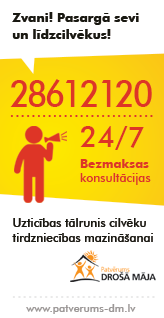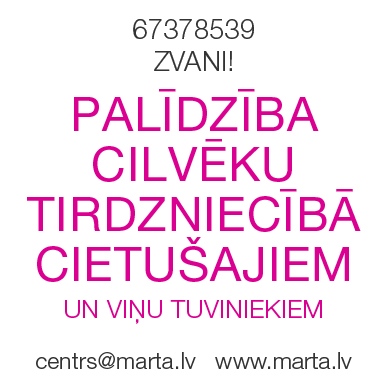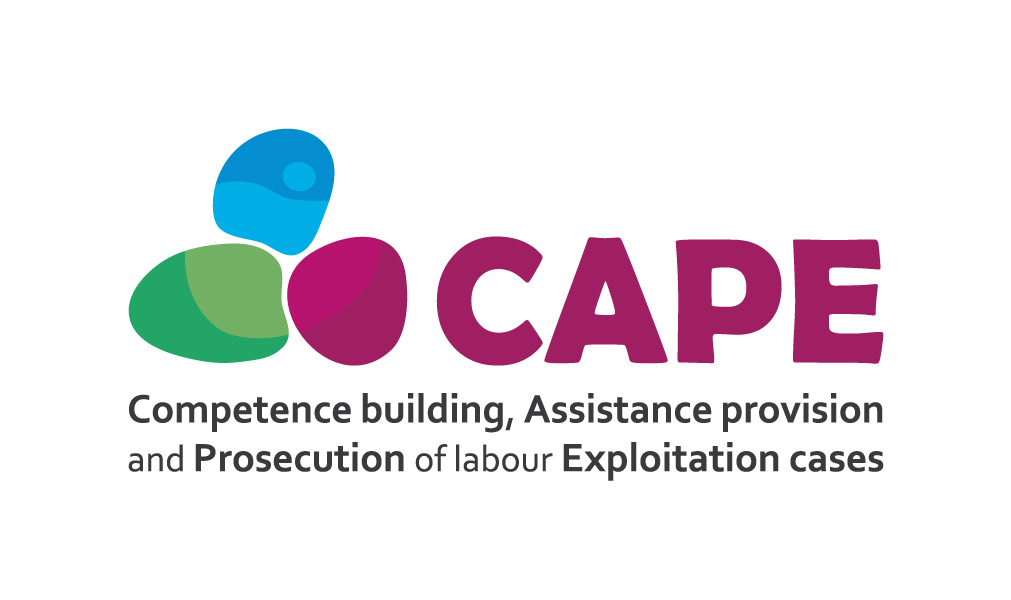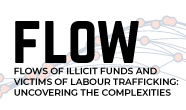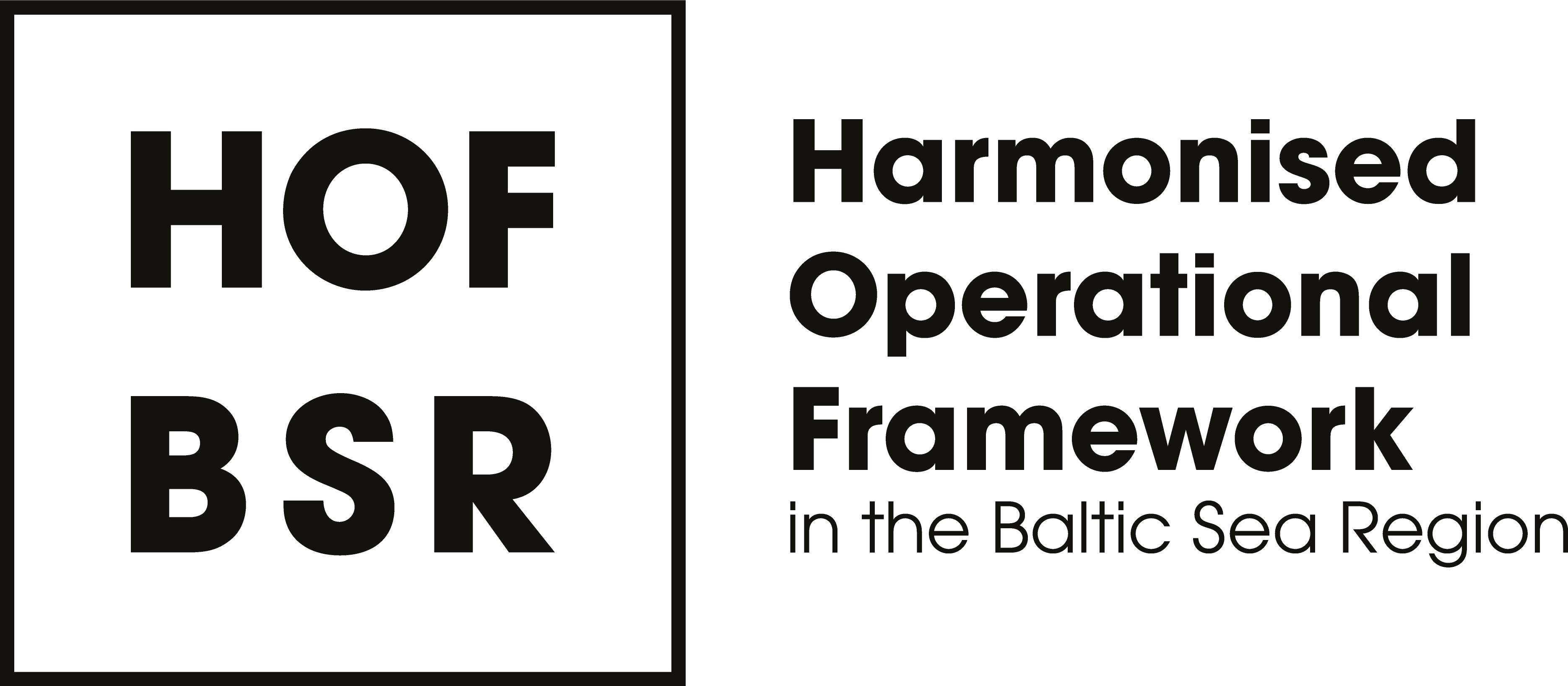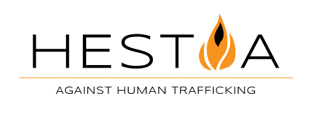Through these projects, Latvia helped increase European Union scrutiny of trafficking by sham marriage and provided much-needed anti-trafficking training to local government officials.
Stabina, currently employed with the Ministry of the Interior of Latvia, sat down with The Baltic Times for an interview.
Over the past 15 years, “trafficking in persons” and “human trafficking” have been used as umbrella terms for activities in which someone obtains or holds a person in compelled service, and includes all of the criminal conduct involved in forced labour and sex trafficking. Could you share with us the current situation and state of trafficking in persons and human trafficking in The Baltic States? Is it a major problem?
According to a 2016 report published by the European Commission on May 19 on the progress being made in the fight against trafficking in human beings a total of 15,846 victims of human trafficking were registered in the European Union. And this is only the very tip of the iceberg. The majority of victims remain unidentified. The most widespread form of exploitation remains sexual exploitation (67 per cent), followed by labour exploitation (21 per cent). 65 per cent of registered victims were EU citizens. In total 4,079 prosecutions and 3,129 convictions were reported by EU Member States for the period between 2013 and 2014.
It is evident that the most prevalent forms of exploitation are sexual exploitation and labour exploitation. Among other forms of exploitation trafficking for forced criminality, sham marriages, and forced begging are identified as the most sharply increasing trends.
Nationals of the Baltic States were for many years victims themselves that were exploited abroad. But situation has been changed and the Baltic States are now used as countries of transit to traffic victims from one country to another, as well; our states are countries where people are exploited. Internal trafficking means that a victim is recruited, trafficked, and exploited within the country without crossing the borders.
The majority of victims identified in Estonia have suffered from labour exploitation, in Lithuania from sexual exploitation, in Latvia sexual exploitation and sham marriages.
Trafficking in human beings is a serious problem for the Baltic States. In reality it affects all society. Persons who were exploited suffer from moral and physical traumas, their health is damaged; it is difficult for them to trust and rely on others once they were deceived and exploited, to return in society and access the labour market. Traffickers are enjoying their illegally acquired money buying luxury properties, cars, yachts, thus affecting market and purchasing capacity of other societies. This all affects our daily life.
What has been the most moving incident that you have encountered in the Baltic States of individuals that have been “trafficked”?
As a co-ordinator I usually see only numbers as pertaining to victims. I have not personally encountered any real victims of human trafficking in my life. But when I read stories of survivors of exploitation I become really angered and I want to do more to make this world better and safer. The latest one was about a girl who was a minor who was exploited into prostitution. She was only 14. During a month and a half she was exploited sexually by 50 men. I cannot imagine who these men were who had bought the sexual services of a minor. The horrible thing is that a perpetrator was a 16-year-old girl and she will be punished for human trafficking. This is just one story, but there are many more stories of women, men, girls, and boys from the Baltic States exploited by individuals and organised crime groups with one sole purpose — that is profit.
What form of human trafficking is the most common in Latvia, and the Baltic States overall?
The situation in Latvia changes. Trafficking for sham marriages was a prevalent form of trafficking for several years: the total number of registered victims was 14 in 2012, 15 in 2013, 22 in 2014 and then we saw a decrease: six in 2015, two in 2016. This can be explained by the work done to raise awareness within the general public and society, along with targeting groups at risk. Sexual exploitation was six in 2012, three in 2013, none in 2014, two in 2015, six in 2016. Forced labour was five in 2012, four in 2013, 12 in 2014, none in 2015, none in 2016.
Forced labour is a form of exploitation which is very difficult to identify and very often victims do not recognise themselves as victims.
But these are only identified and assisted victims. I believe that there are many more victims who have not been identified.
You were recently awarded Latvia’s 2016 Trafficking in Persons (TIP) Hero for your exceptional commitment to preventing human trafficking. Could you inform us of the activities, and scope of attracting international funding for trafficking prevention activities, and your public-private partnership promotion efforts which contributed enormously to preventing human trafficking in Latvia?
Trafficking in human beings is a cross-border phenomenon which cannot be efficiently addressed by any one country. There is a need for a joint approach and co-operation. The issue of relevant funding for counter-trafficking activities is always topical for the non-governmental sector as well as public institutions. The HESTIA project brought together like-minded governmental representatives and NGOs who have rich experience in this field.
The ambitious goal of the HESTIA project is to address the issue of sham marriages in Latvia and Europe in general through creating a common understanding of a new form of human trafficking, namely trafficking in human beings through for and through sham marriages, providing a specific definition of this form of human trafficking, and proposing a comprehensive approach to its prevention.
The anti-trafficking projects — HESTIA and others, like STROM and STROM II — were granted and the total amount of money for counter-trafficking activities is about 900,000 euros.
The HESTIA project “Preventing human trafficking and sham marriages: A multidisciplinary solution” is Latvia’s initiative to join forces to address this unstudied phenomenon which confuses almost all countries. The three Baltic States — Latvia, Estonia, Lithuania — the Slovak Republic as countries of origin of victims, Ireland as a country of destination where exploitation of victims takes place, and Finland in a capacity of the leading researcher are involved in the project.
The biggest challenge of the HESTIA project is to carry out research on something that does not have a name, that has not been defined, and regarding which there is no common understanding. At the same time the training methodology and materials are being produced by Latvian experts. Later in the autumn there will be pilot trainings for multi-disciplinary groups, awareness raising campaigns marking the EU Anti-Trafficking Day, and debriefing meetings in Latvia, Estonia, Lithuania, the Slovak Republic, and Ireland.
In finishing the project, Latvia will host an international conference in November and the results, conclusions, and recommendations will be presented at a meeting of the European Union Informal Network of National Rapporteurs or Equivalent Mechanisms on Trafficking in Human Beings in December in Brussels.
So many activities are planned and it is very exciting to achieve new goals.
To your knowledge has anyone in Latvia, or the Baltic States, been convicted of human trafficking and punished?
We are not very proud of the numbers of convictions. There were convictions in the Baltic States, but not very many and punishment is usually not as severe as it should be. Cases involving human trafficking should be investigated, prosecuted, and adjudicated as soon as possible providing justice and punishments commensurate to crimes committed.
There are more victims identified than perpetrators. Usually it happens because a victim was exploited abroad, assisted in a home country, and perpetrators were convicted in a country where the victim was exploited. It happens very often that person decides to return to the home country and it is our responsibility to help, support, and protect.
In such cases the Latvian Police is searching for recruiters, supporters, and joint participants of the trafficking crime. Latvian Police detected an organised criminal group in 2014 which recruited Latvian women with mental health disabilities to marry third country nationals in Ireland and Cyprus. Latvian and Pakistani nationals were arrested. Now this criminal case has be sent to the court for adjudication.
What is the co-operation like between the Baltic States on human trafficking?
There is well established co-operation between the Baltic States to address different issues of trafficking in human beings. There are inter-governmental agreements, multi-sectoral co-operation between different institutions, joint projects. The Baltic States have very efficient and responsible non-governmental organisations who are dealing with human trafficking issues — they provide awareness raising, training for practitioners, develop informative materials and brochures, work at grass-root level, identify and assist victims of human trafficking, co-operate with law enforcement agencies. It is done both on a national level and regional level.
What is the relationship between organised crime and trafficking in the Baltic States?
Human trafficking can be conducted by individual criminals who do not have wide opportunities and resources and usually in such cases exploitation is committed locally. Law enforcement agencies clearly see the relationship between organised crime and trafficking in human beings. Many countries are targeted by human traffickers due to high demand for cheap sexual and labour services in these countries. Human trafficking provides extremely high profits and it contains quite low risks, human trafficking is closely linked with other crimes, e.g. money from sexual exploitation fuels drug trafficking. Such crimes are committed by organised criminal groups, which demands careful planning, organisation, and engagement of several persons with different tasks. Criminals are very creative.
In South Africa women from Vietnam are exploited as rhino hunters and when they are caught by police they are not treated as victims of human trafficking, they are treated as criminals.
In the Baltic Sea region criminal groups exploit persons for forced criminality, as drug mules, as money smugglers (carriers). And it is very important to bring to justice perpetrators, not victims, and it is one of the main challenges of the investigative authorities — seeing a crime within a crime. It is hard to see a causal relationship between human trafficking and the crime committed by the victim of human trafficking.
Is there anything else which you would like to add to this interview for our readers, which you believe is important and we may have overlooked in our questions?
There is still so much to do and we really have no time to sit back and to only admire our achievements. Stakeholders and partners from the Baltic States are making joint efforts towards prevention and combating trafficking in human beings.
*Project "Preventing human trafficking and sham marriages: A multidisciplinary solution" (HESTIA) is being implemented by Directorate General of Home finance of European Commission (EC) "Prevention of and Fight against Crime Programme". Grant Agreement Nr. HOME/2013/ISEC/AG/THB/4000005845. An implementation of HESTIA project was launched on 1 January 2015. #HESTIA_THB
The information was published by (in coordination with the editorial board of The Baltic Times): Rasa Saliņa, Public Relations Specialist of the project HESTIA, e-mail: rasa.salina@gmail.com
